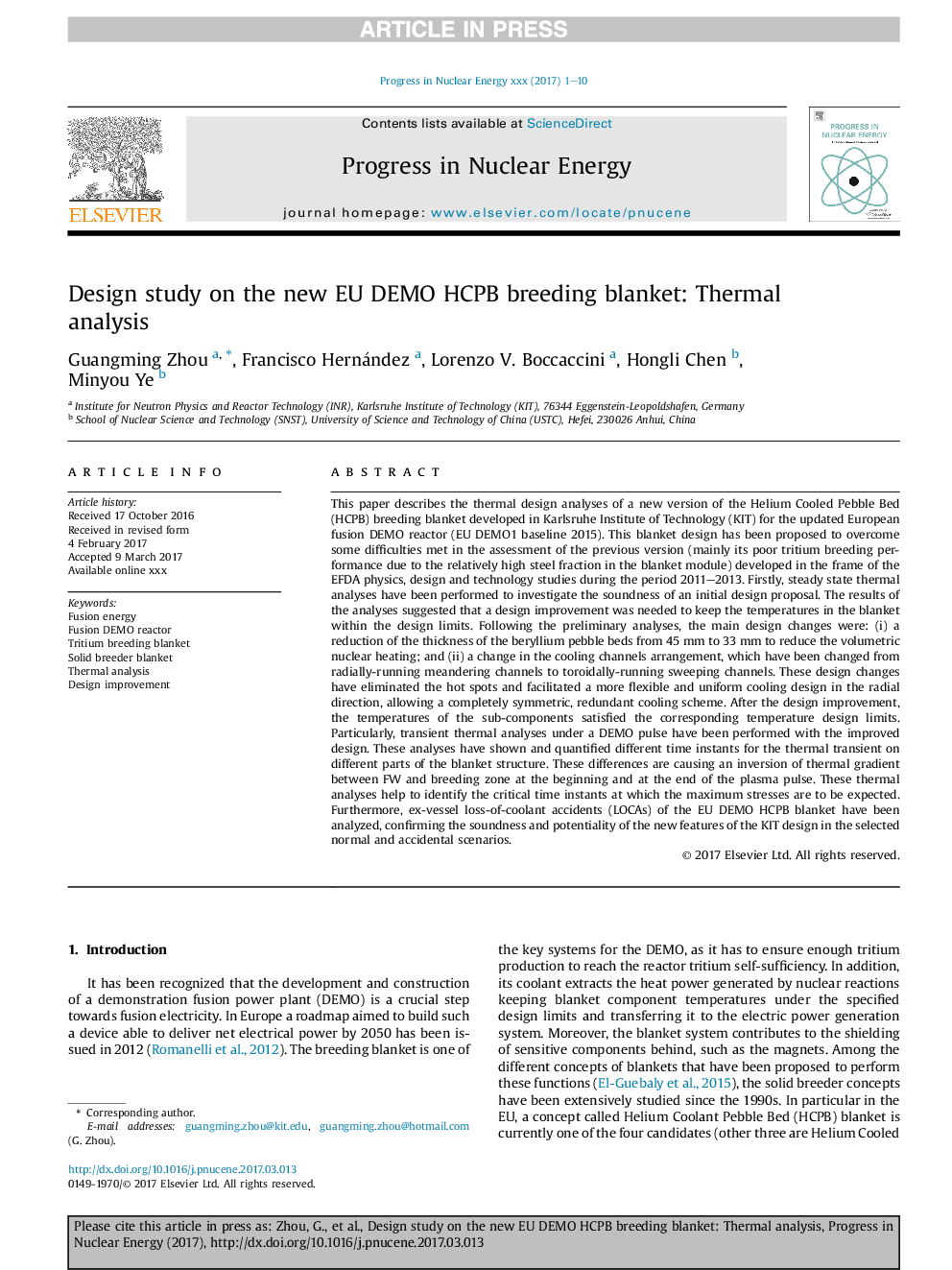| کد مقاله | کد نشریه | سال انتشار | مقاله انگلیسی | نسخه تمام متن |
|---|---|---|---|---|
| 5478056 | 1521740 | 2017 | 10 صفحه PDF | دانلود رایگان |
عنوان انگلیسی مقاله ISI
Design study on the new EU DEMO HCPB breeding blanket: Thermal analysis
دانلود مقاله + سفارش ترجمه
دانلود مقاله ISI انگلیسی
رایگان برای ایرانیان
کلمات کلیدی
موضوعات مرتبط
مهندسی و علوم پایه
مهندسی انرژی
مهندسی انرژی و فناوری های برق
پیش نمایش صفحه اول مقاله

چکیده انگلیسی
This paper describes the thermal design analyses of a new version of the Helium Cooled Pebble Bed (HCPB) breeding blanket developed in Karlsruhe Institute of Technology (KIT) for the updated European fusion DEMO reactor (EU DEMO1 baseline 2015). This blanket design has been proposed to overcome some difficulties met in the assessment of the previous version (mainly its poor tritium breeding performance due to the relatively high steel fraction in the blanket module) developed in the frame of the EFDA physics, design and technology studies during the period 2011-2013. Firstly, steady state thermal analyses have been performed to investigate the soundness of an initial design proposal. The results of the analyses suggested that a design improvement was needed to keep the temperatures in the blanket within the design limits. Following the preliminary analyses, the main design changes were: (i) a reduction of the thickness of the beryllium pebble beds from 45Â mm to 33Â mm to reduce the volumetric nuclear heating; and (ii) a change in the cooling channels arrangement, which have been changed from radially-running meandering channels to toroidally-running sweeping channels. These design changes have eliminated the hot spots and facilitated a more flexible and uniform cooling design in the radial direction, allowing a completely symmetric, redundant cooling scheme. After the design improvement, the temperatures of the sub-components satisfied the corresponding temperature design limits. Particularly, transient thermal analyses under a DEMO pulse have been performed with the improved design. These analyses have shown and quantified different time instants for the thermal transient on different parts of the blanket structure. These differences are causing an inversion of thermal gradient between FW and breeding zone at the beginning and at the end of the plasma pulse. These thermal analyses help to identify the critical time instants at which the maximum stresses are to be expected. Furthermore, ex-vessel loss-of-coolant accidents (LOCAs) of the EU DEMO HCPB blanket have been analyzed, confirming the soundness and potentiality of the new features of the KIT design in the selected normal and accidental scenarios.
ناشر
Database: Elsevier - ScienceDirect (ساینس دایرکت)
Journal: Progress in Nuclear Energy - Volume 98, July 2017, Pages 167-176
Journal: Progress in Nuclear Energy - Volume 98, July 2017, Pages 167-176
نویسندگان
Guangming Zhou, Francisco Hernández, Lorenzo V. Boccaccini, Hongli Chen, Minyou Ye,